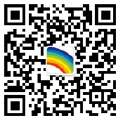In a recent collaboration, Peng Chao's team from the School of Electronics Engineering at Peking University, alongside research groups headed by Academician Zheng Wanhua from the Chinese Academy of Sciences' Institute of Semiconductors and Academician Yuri Kivshar from the Australian National University, have unveiled groundbreaking research in the journal Nature Nanotechnology. The study details the observation of collective guided mode resonance (CGR) triggered by boundary momentum scattering and the successful realization of chiral laser emission through the disruption of mirror symmetry via asymmetric pumping techniques.
The research team ingeniously designed an active photonic crystal featuring a circular boundary. Within this design, the circular boundary scattering effect facilitates the isotropic coupling of multiple photonic crystal guided modes, each propagating independently. This interaction results in the formation of a doubly degenerate CGR state. By implementing asymmetric pumping technology, the researchers were able to achieve single-mode lasing from chiral vortex lasers and observe vortex beams with zero center intensity in real space. This confirmation underscores the presence of non-zero chiral orbital angular momentum in the laser beams.
This pioneering work offers a novel approach to the development of practical chip-scale vortex lasers, holding promising applications in quantum/photonic computing, sensing technologies, micro-manipulation, chiral identification, and other advanced fields.

-
 C114 Communication Network
C114 Communication Network -
 Communication Home
Communication Home


